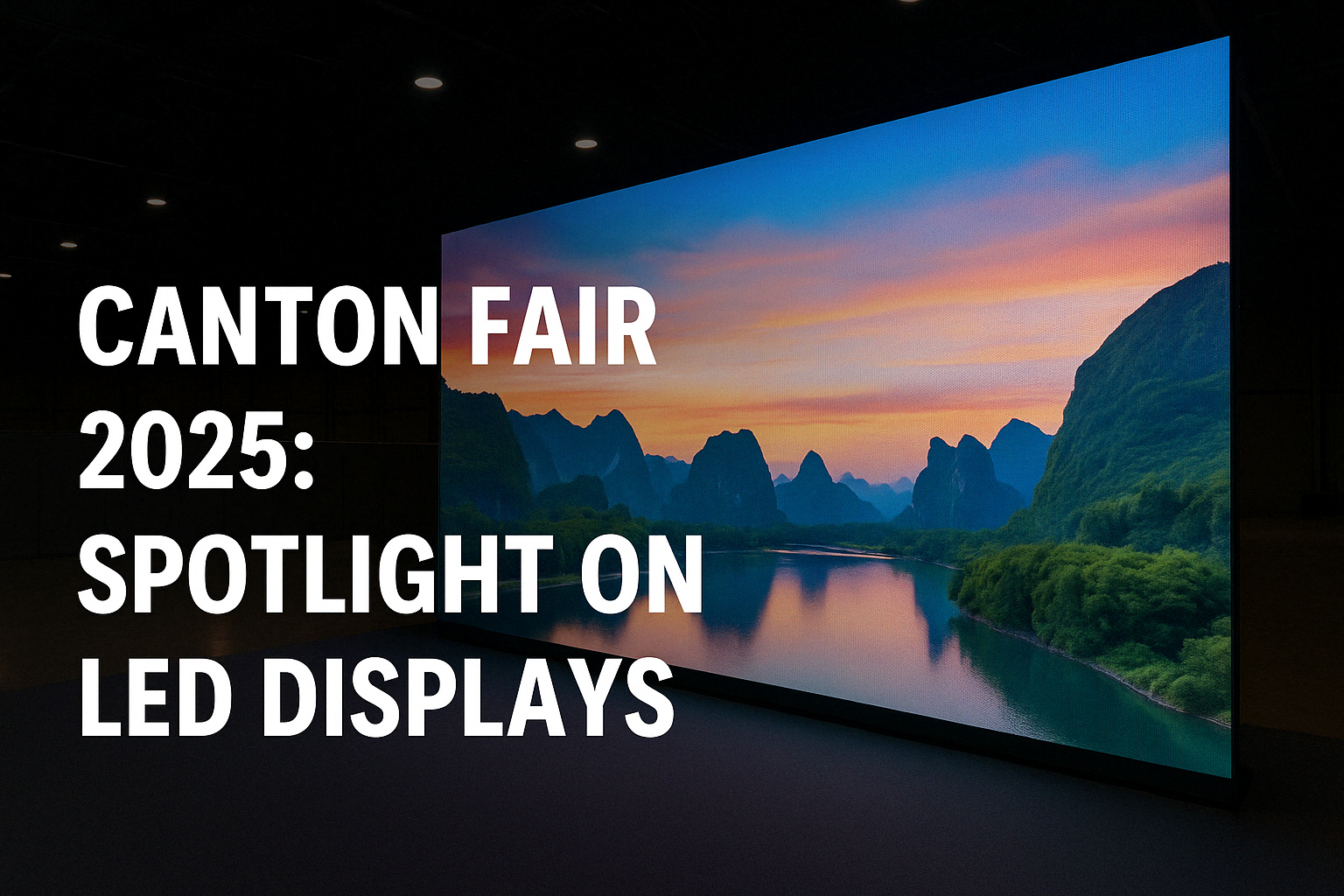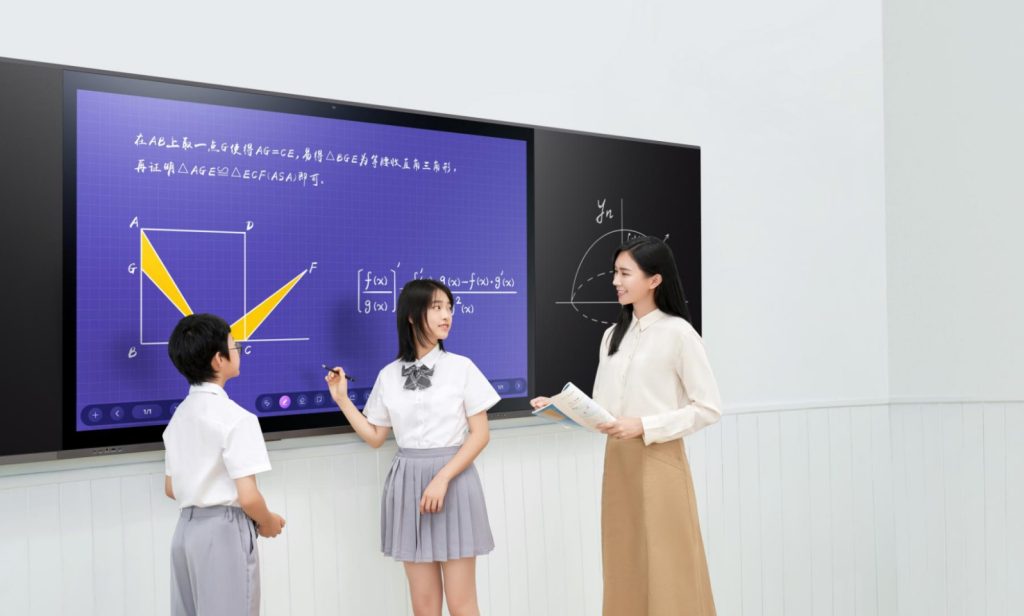-
Представляем серию FP Ledcheer: Надежный светодиодный дисплей на открытом воздухе, созданный для производительности и надежности
-

Cheer RS Гибкая серия: Конечное гибкое решение для проката светодиодов для любого события
-

Кантон ярмарка 2025 Предварительный просмотр: Светодиодные тенденции дисплея, которые вы не можете пропустить - Insights of Ledcheer
2024-12-27

Integrated LED Display Screens: Transforming the Education Industry
В последние годы, technological advancements have significantly transformed various sectors, and the education industry is no exception. One of the most notable innovations in education technology is the widespread adoption of integrated LED display screens, often referred to as all-in-one LED screens. These versatile and high-performance displays are increasingly becoming a standard feature in classrooms, lecture halls, and training centers around the globe. This article explores how integrated LED display screens are reshaping the education landscape and highlights their advantages, приложения, and potential challenges.
Advantages of Integrated LED Display Screens
Integrated LED display screens combine high-definition visuals, interactivity, and seamless connectivity into a single solution. Here are some key advantages that make them particularly suitable for the education sector:
1. Enhanced Visual Experience:
LED display screens offer superior brightness, vibrant colors, and high resolution, making them ideal for presenting complex information such as diagrams, charts, and videos. This feature ensures that students, even in large lecture halls, can clearly see the content.
2. Interactivity:
Many integrated LED screens come equipped with touch-sensitive capabilities, allowing for interactive learning experiences. Teachers can annotate directly on the screen, conduct quizzes, and engage students in group activities, fostering an active learning environment.
3. Durability and Energy Efficiency:
LED technology is known for its durability and energy efficiency. These screens have a long lifespan and consume significantly less power compared to traditional projectors and other display technologies.
4. Connectivity and Compatibility:
Integrated LED display screens support various connectivity options, including Wi-Fi, HDMI, and USB, enabling seamless integration with laptops, таблетки, and other devices. They are also compatible with popular educational software and learning management systems.
5. Space-Saving Design:
The all-in-one design eliminates the need for additional hardware such as projectors, whiteboards, or external speakers. This compact form factor makes it easier to install and maintain in classrooms of all sizes.
Applications in the Education Sector
Integrated LED display screens have found diverse applications in the education industry, ranging from K-12 schools to higher education institutions and corporate training environments. Some of the key use cases include:
1. Interactive Classrooms:
In primary and secondary schools, these screens are used to create interactive lessons that engage students through multimedia presentations, gamified learning modules, and collaborative activities. Например, a biology teacher can use 3D animations to demonstrate the anatomy of a human heart in vivid detail.
2. Lecture Halls and Auditoriums:
In universities and colleges, large-format LED screens are replacing traditional projectors to deliver lectures, presentations, and seminars. The superior image quality and wide viewing angles ensure that every student in the hall can access the content equally well.
3. Virtual and Hybrid Learning:
With the rise of remote and hybrid learning models, integrated LED screens facilitate virtual classrooms by enabling video conferencing, online assessments, and real-time collaboration. They also serve as a bridge between in-person and online students, ensuring inclusivity.
4. Training and Professional Development:
In corporate training and adult education, these screens are used to deliver engaging workshops, simulations, and role-playing exercises. Например, a sales training program can leverage the screens’ interactivity to conduct real-time role-playing scenarios.
5. STEM and Coding Labs:
In specialized learning environments like STEM labs and coding centers, integrated LED screens enable hands-on learning by displaying programming outputs, scientific experiments, and data visualizations.
Impact on Teaching and Learning
The integration of LED display screens in education has profound implications for both teaching and learning. Teachers benefit from the ease of content delivery and the ability to incorporate diverse teaching materials, including videos, animations, and real-time data. This versatility enables educators to cater to different learning styles, such as visual, auditory, and kinesthetic learners.
Students, on the other hand, enjoy a more engaging and immersive learning experience. The interactivity of LED screens encourages active participation, critical thinking, and problem-solving skills. Кроме того, the technology bridges the digital divide by exposing students to advanced tools that prepare them for the technology-driven workforce.
Challenges and Considerations
Despite their numerous advantages, the implementation of integrated LED display screens is not without challenges. Schools and institutions must address several considerations to maximize their benefits:
1. Cost:
The initial investment for purchasing and installing integrated LED screens can be significant, especially for institutions with limited budgets. Однако, the long-term savings in maintenance and energy costs can offset this initial expense.
2. Training for Educators:
To fully utilize the capabilities of LED screens, teachers and administrators need proper training. This may require additional time and resources for professional development.
3. Technical Support and Maintenance:
Regular maintenance and technical support are essential to ensure the smooth functioning of the screens. Institutions must have access to reliable support services to minimize downtime.
4. Digital Equity:
While LED screens enhance learning, their adoption may widen the digital divide if not all institutions can afford them. Governments and policymakers must consider equitable distribution to ensure access for underprivileged schools.
Future Prospects
As technology continues to evolve, integrated LED display screens are likely to become even more advanced and affordable. Emerging trends such as augmented reality (АР) and artificial intelligence (AI) integration hold the potential to further enhance their capabilities. Например, AR-enabled LED screens could allow students to explore historical sites virtually or conduct chemistry experiments in a simulated environment.
Moreover, advancements in sustainability and energy-efficient designs will make these screens more environmentally friendly, aligning with the global push for greener technologies in education.
Заключение
Integrated LED display screens represent a transformative force in the education industry, bridging the gap between traditional teaching methods and modern digital tools. By enhancing interactivity, improving content delivery, and fostering inclusivity, these screens have the potential to revolutionize how knowledge is imparted and absorbed. Однако, their successful adoption depends on careful planning, adequate training, and equitable access. As education continues to embrace digital transformation, integrated LED display screens will undoubtedly play a central role in shaping the future of learning.




